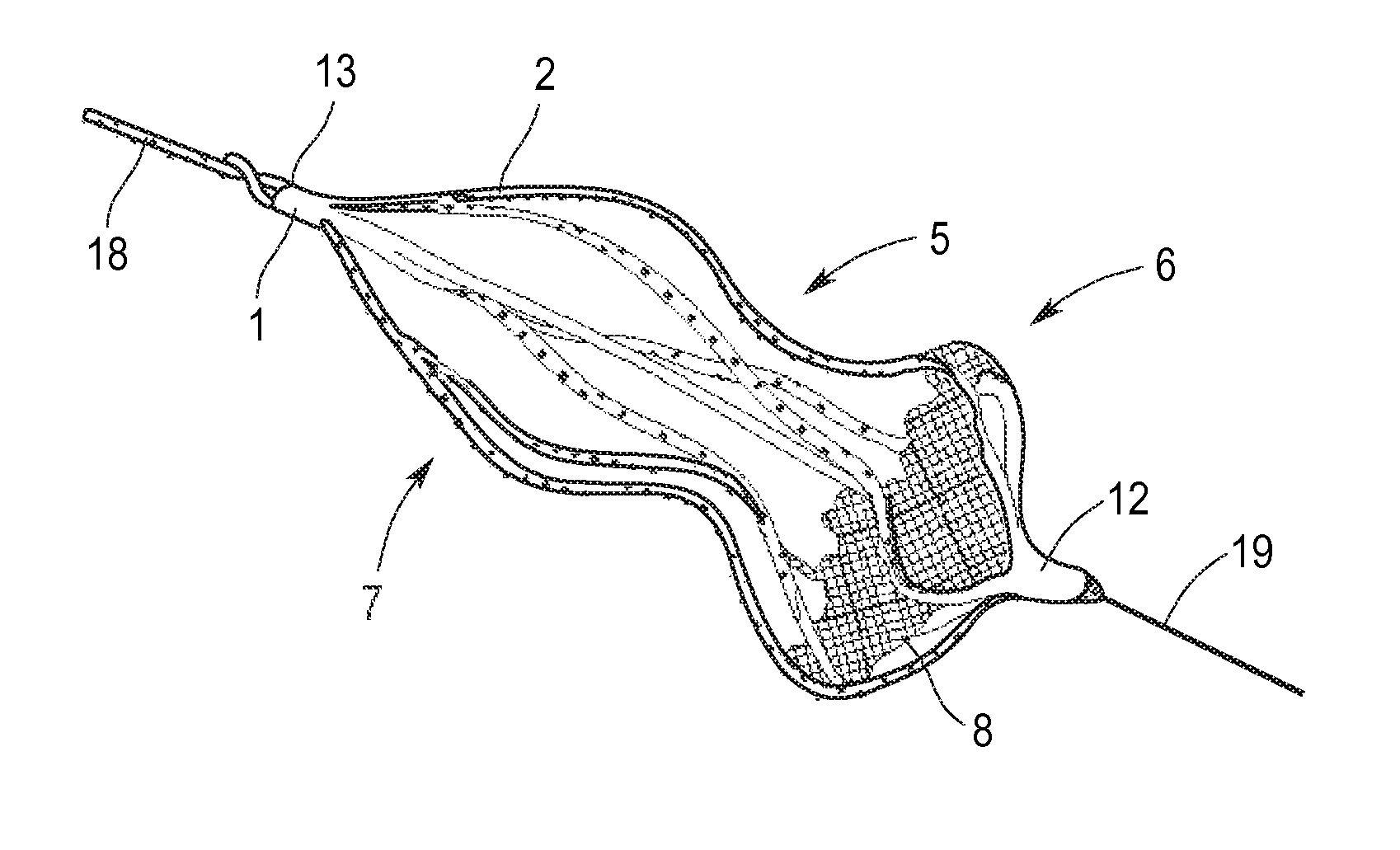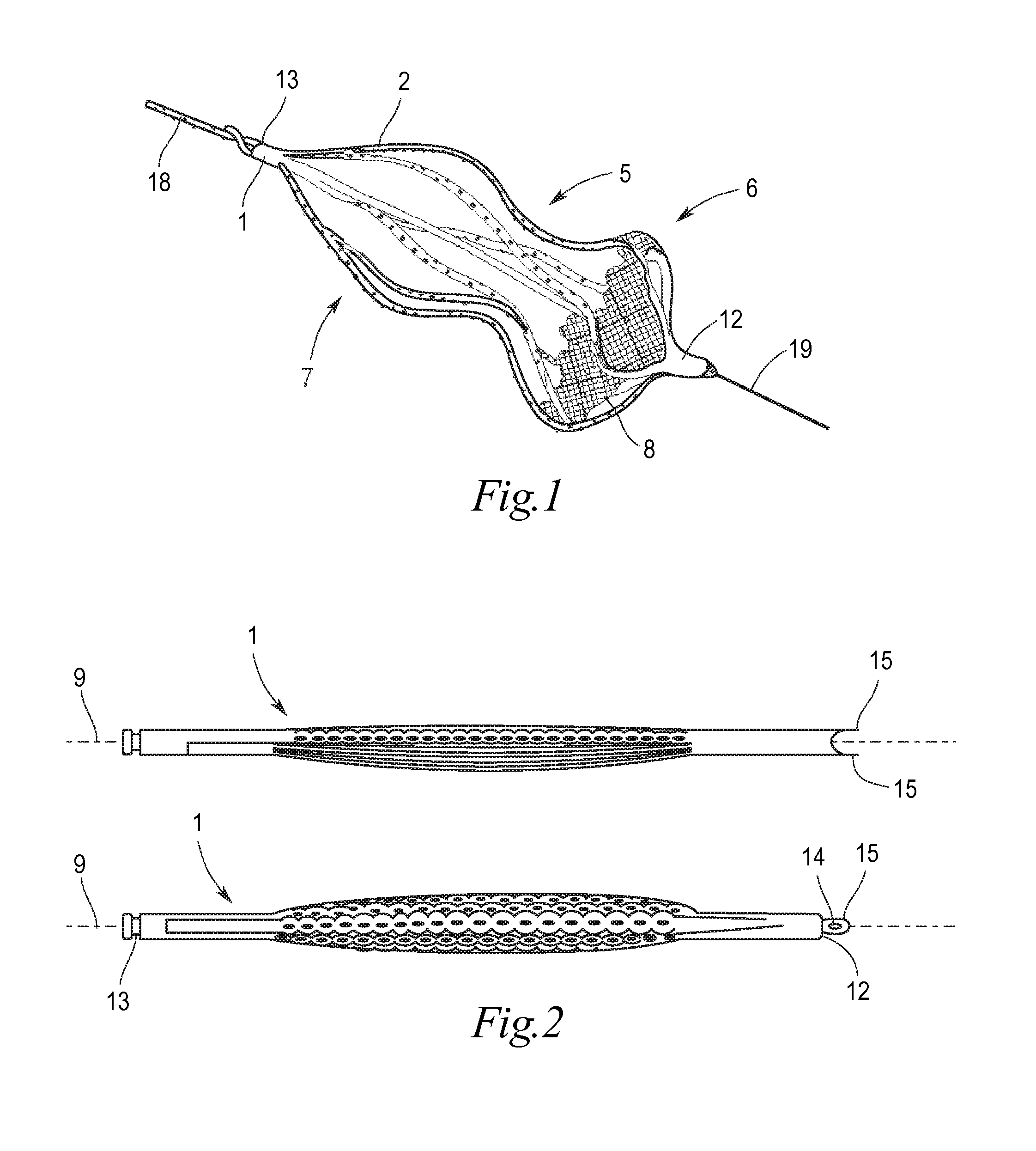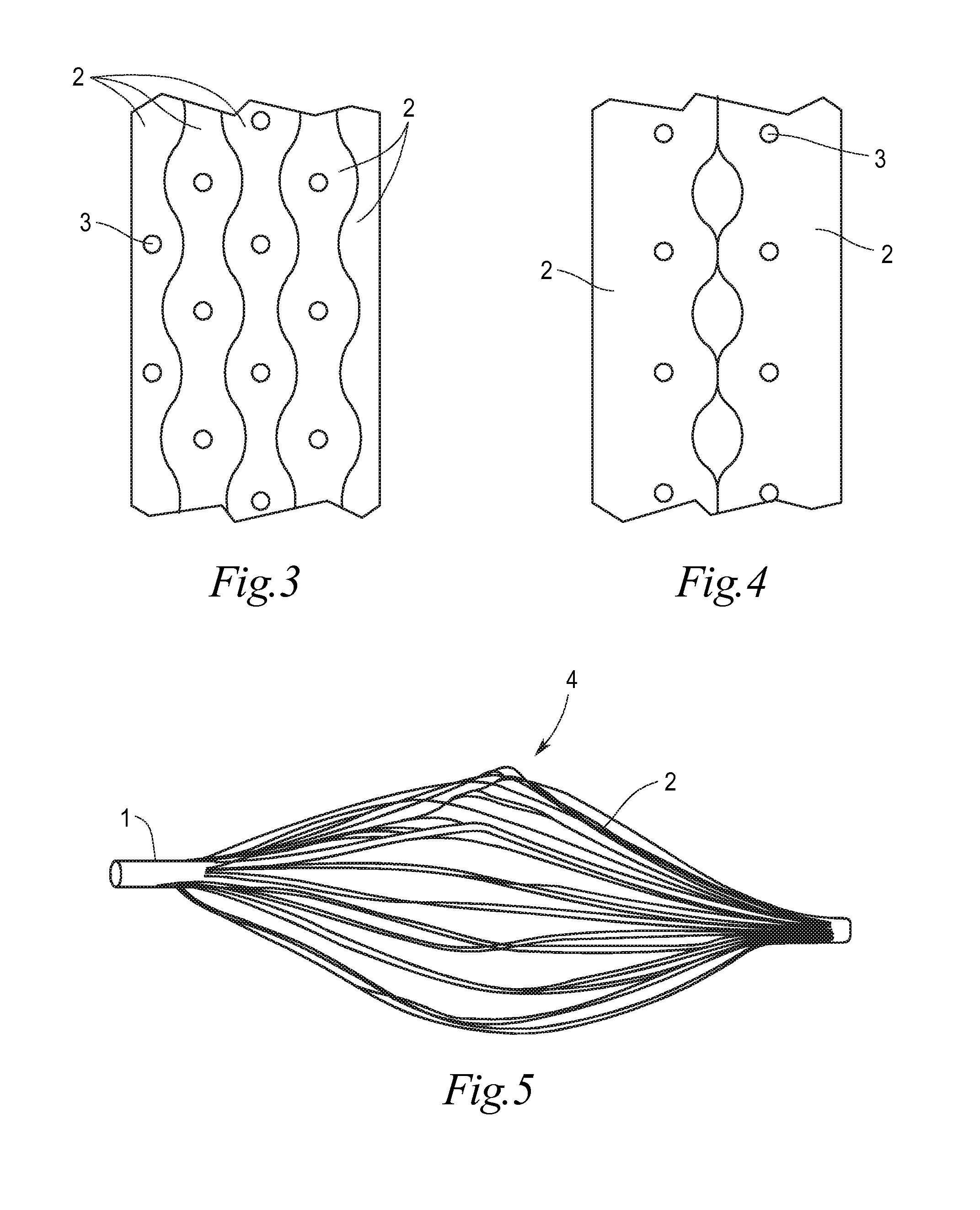Implant for the closing of defect openings in the body of a human or animal and a system for the placement of such an implant
a technology for defect openings and implants, which is applied in the field of implants for the closing of defect openings in the body of human or animal and to a system for the placement of such implants, can solve the problems of difficult placement of implants described there, uneconomical course of action, and considerable assembly effort of implants constructed from a plurality of structural elements, so as to achieve significant reduction of the duration of the operation, the effect of increasing the success rate and ensuring the integrity
- Summary
- Abstract
- Description
- Claims
- Application Information
AI Technical Summary
Benefits of technology
Problems solved by technology
Method used
Image
Examples
Embodiment Construction
[0060]Represented in a perspective view in FIG. 1 is an implant according to the invention, which has partly unfolded from its primary form into the secondary form, together with elements of a placement system according to the invention. The configuration represented in FIG. 1 is typically obtained during the placement of the implant.
[0061]The load-bearing structure of an implant according to the invention, represented in FIG. 1, is expediently produced from a tube 1 made of nitinol. Nitinol is a nickel-titanium alloy which has not only superelasticity but also the property of shape memory and is therefore particularly suited for this application. By fine laser-beam cutting, the tube 1 is slit in such a way that a number of strips 2 form. The slitting of course only takes place over part of the length of the tube 1. Furthermore, holes 3 can also be cut into the strips 2 in the same way, in order to obtain the desired distribution of rigidity and to allow one or more membranes to be ...
PUM
 Login to View More
Login to View More Abstract
Description
Claims
Application Information
 Login to View More
Login to View More - R&D
- Intellectual Property
- Life Sciences
- Materials
- Tech Scout
- Unparalleled Data Quality
- Higher Quality Content
- 60% Fewer Hallucinations
Browse by: Latest US Patents, China's latest patents, Technical Efficacy Thesaurus, Application Domain, Technology Topic, Popular Technical Reports.
© 2025 PatSnap. All rights reserved.Legal|Privacy policy|Modern Slavery Act Transparency Statement|Sitemap|About US| Contact US: help@patsnap.com



